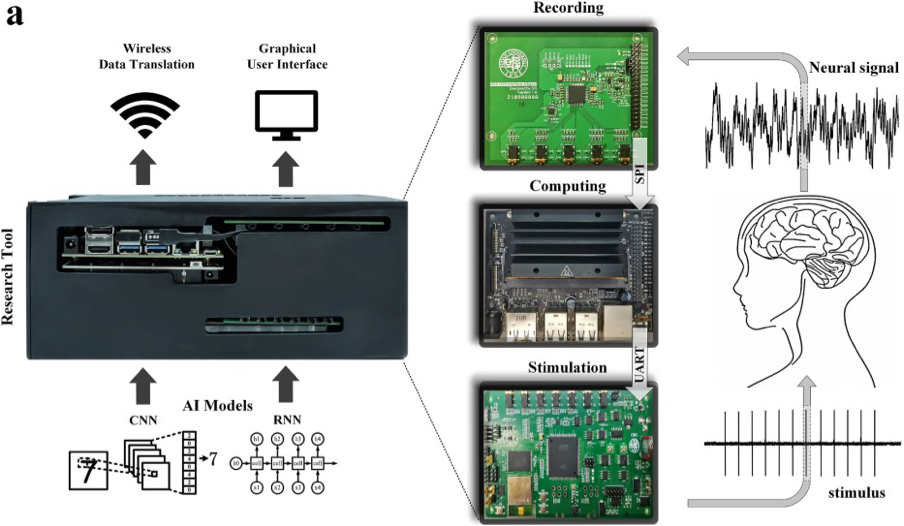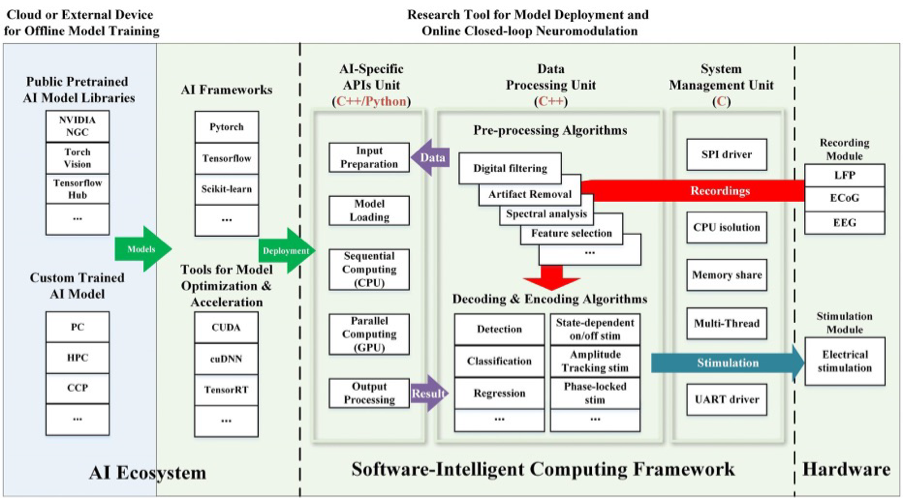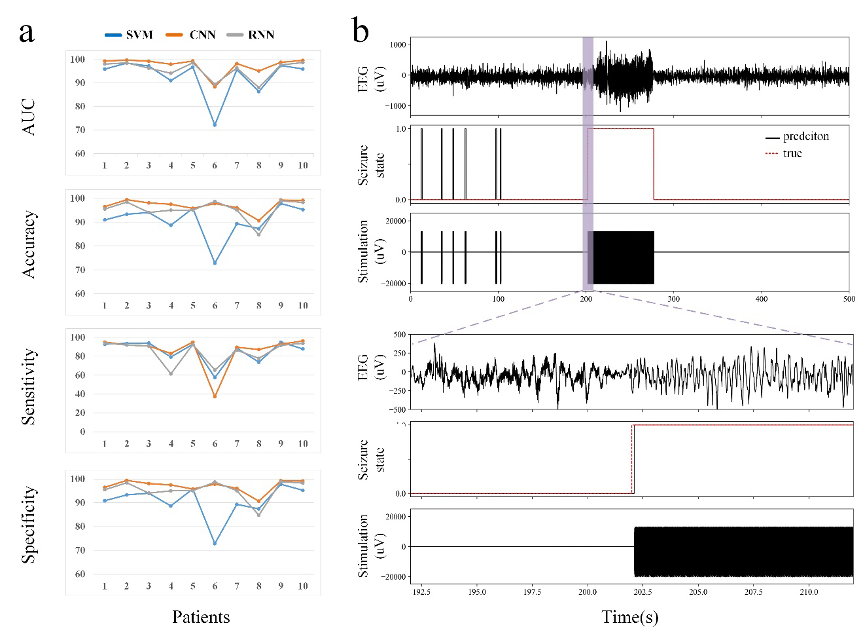Neuromodulation is a technique that enhances or restores brain function by directly intervening in neural activity. It is commonly used to treat conditions like Parkinson’s disease, epilepsy, and depression. The shift from open-loop to closed-loop neuromodulation strategies enables on-demand modulation, improving therapeutic effects while reducing side effects. This could lead to significant advancements in precision and personalized electronic medicine.
Closed-loop neuromodulation strategies face challenges in real-time neural decoding and encoding. Machine learning algorithms and neural networks are used to interpret complex neural activity linked to various pathological states. However, we need precise interventions to restore neural functions affected by disease. Mobile systems facilitate research on patients under conditions of free-moving and chronic treatment.
To address these challenges, the researchers developed the Brain-Machine Interactive Neuromodulation Research Tool (BMINT). This tool senses neural activity, processes data using machine learning algorithms and neural networks, and delivers real-time electrical stimulation. It enables bidirectional information transfer between the brain and the tool, employing edge AI computing for efficient real-time signal processing.

The BMINT consists of three main hardware modules:
- Recording: Includes eight channels for recording neurophysiological signals with a 24-bit amplitude resolution and a 2000 Hz sampling frequency. The researchers used an NVIDIA Jetson Nano developer kit as a computing module because of edge AI computing capability and compact form factor, low power consumption.
- Computing: Has various I/O ports to deliver control commands to interface with other neuromodulation devices, i.e., transcranial magnetic stimulation (TMS) and ultrasonic stimulation.
- Stimulation: Delivers 2-channel constant current electrical stimulation, with pulse parameters (amplitude, frequency and pulse width) adjusted in real time.
The researchers choose the NVIDIA Jetson platform as the computing module because of public pretrained AI model libraries available, pretrained AI models (for example, NVIDIA NGC, TorchVision, and TensorFlow Hub), and various optimization and acceleration tools (for example, CUDA, cuDNN, and NVIDIA TensorRT) for custom-trained AI models.
The data is saved and streamed to Jetson through its serial peripheral interface (SPI) functionality. After data is fed into Jetson, the GPU-accelerated algorithm, such as SVM, CNN, and RNN, is applied to process the signal in real time. Finally, the model uses UART to drive the stimulation module.
Results
The Jetson Nano in the BMINT increased the computation efficiency by about 14.77x compared to using the CPU alone. Considering the cycles of important beta or gamma neural oscillations related to brain diseases, that is, about 50 ms or 15 ms, the ideal system time delay should be stable and below these cycles so that cycle-by-cycle phase modulation could be possible.
The BMINT research tool achieved the lowest system time delay of 2.829 ± 0.057 ms from the onset of the input pulse to the output stimulus, while maintaining a stable, real-time performance.


In the simulated online demonstration, the BMINT successfully showcased the complete process of applying the ML model for real-time, closed-loop neuromodulation in epilepsy.
The sensitivity of the model was 96.16 % (patient 10, Fig. 3a). In the 500s online process, there are six false positive detections and the false positive rate was about 1.42 % (6 samples/423 samples).
In epilepsy treatment with deep brain stimulation, the algorithms are generally tuned to achieve better sensitivity so that the seizure can be suppressed successfully. Optimal performance with both high sensitivity and specificity is highly desired to avoid unnecessary stimulation and deliver effective stimulation to suppress seizures.
Conclusion
The BMINT research tool enabled intelligent closed-loop neuromodulation and has capabilities of neural sensing of local field potentials; ECoG, EEG, or EMGs; computing with mainstream ML algorithms; and delivering electrical stimulation pulse by pulse in real time.
The research tool achieved a system time delay of less than 3 ms, computing capabilities in feasible computation cost, efficient deployment of machine learning algorithms, and neural network acceleration process.
For more information, see the Brain-Machine Interactive Neuromodulation Research Tool with Edge AI Computing paper and the /gaosiy/research-tool-seizure-detection GitHub repo.